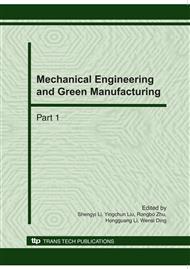p.1159
p.1165
p.1170
p.1175
p.1180
p.1185
p.1190
p.1195
p.1200
Optimization Models and Heuristic Method Based on Simulated Annealing Strategy for Traveling Salesman Problem
Abstract:
The traveling salesman problem (TSP) is a problem in combinatorial optimization studied in operations research and theoretical computer science. In this paper, we presented a novel heuristic simulated annealing algorithm for solving TSP. The algorithm is fully operational in the genetic role of crossover operator, and mutation operator, to achieve a balance between speed and accuracy. The experiment results show that the algorithm is better than the traditional method.
Info:
Periodical:
Pages:
1180-1184
Citation:
Online since:
October 2010
Authors:
Price:
Сopyright:
© 2010 Trans Tech Publications Ltd. All Rights Reserved
Share:
Citation:


